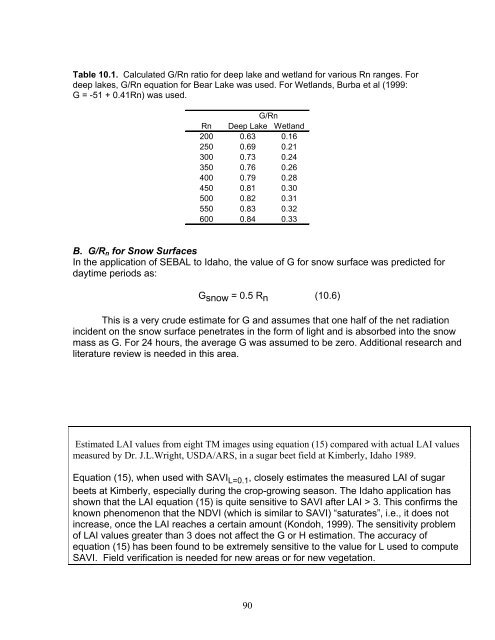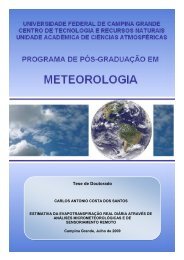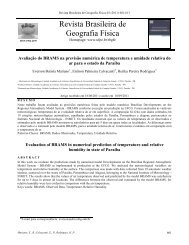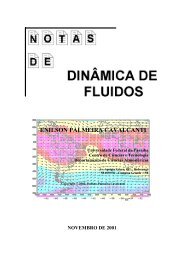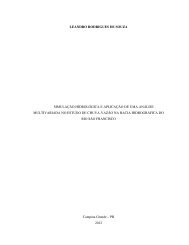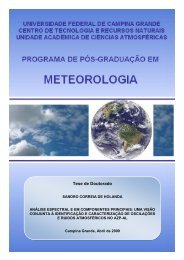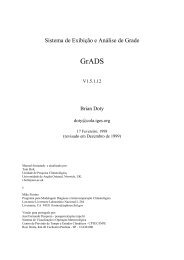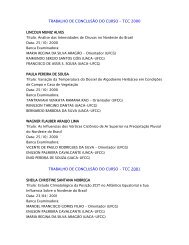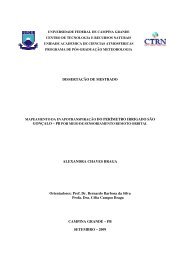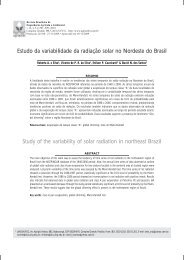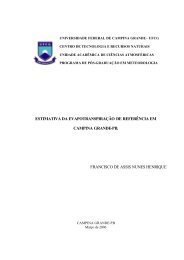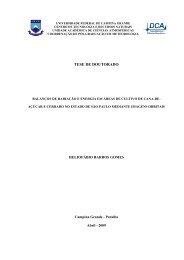Create successful ePaper yourself
Turn your PDF publications into a flip-book with our unique Google optimized e-Paper software.
Table 10.1. Calculated G/Rn ratio for deep lake and wetland for various Rn ranges. Fordeep lakes, G/Rn equation for Bear Lake was used. For Wetlands, Burba et al (1999:G = -51 + 0.41Rn) was used.G/RnRn Deep Lake Wetland200 0.63 0.16250 0.69 0.21300 0.73 0.24350 0.76 0.26400 0.79 0.28450 0.81 0.30500 0.82 0.31550 0.83 0.32600 0.84 0.33B. G/R n for Snow SurfacesIn the application of <strong>SEBAL</strong> to Idaho, the value of G for snow surface was predicted fordaytime periods as:Gsnow = 0.5 Rn (10.6)This is a very crude estimate for G and assumes that one half of the net radiationincident on the snow surface penetrates in the form of light and is absorbed into the snowmass as G. For 24 hours, the average G was assumed to be zero. Additional research andliterature review is needed in this area.Estimated LAI values from eight TM images using equation (15) compared with actual LAI valuesmeasured by Dr. J.L.Wright, USDA/ARS, in a sugar beet field at Kimberly, Idaho 1989.Equation (15), when used with SAVI L=0.1 , closely estimates the measured LAI of sugarbeets at Kimberly, especially during the crop-growing season. The Idaho application hasshown that the LAI equation (15) is quite sensitive to SAVI after LAI > 3. This confirms theknown phenomenon that the NDVI (which is similar to SAVI) “saturates”, i.e., it does notincrease, once the LAI reaches a certain amount (Kondoh, 1999). The sensitivity problemof LAI values greater than 3 does not affect the G or H estimation. The accuracy ofequation (15) has been found to be extremely sensitive to the value for L used to computeSAVI. Field verification is needed for new areas or for new vegetation.90


